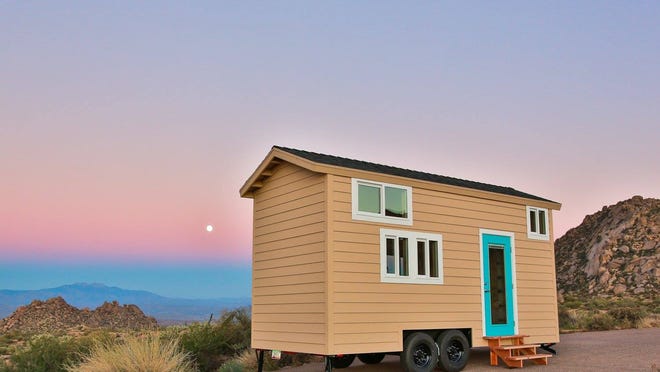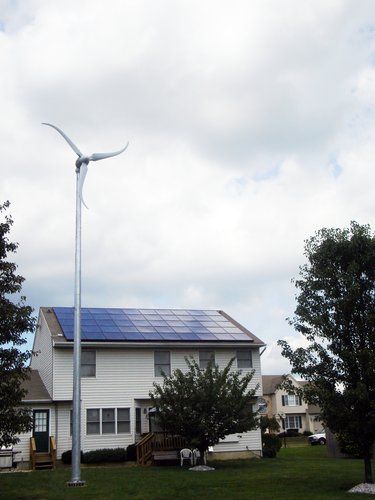
In the realm of art, innovation and sustainability often intersect to create captivating works that challenge traditional notions of creativity.
This article explores ten inspiring forms of recycled art, showcasing the transformative power of found objects and sustainable practices.
From upcycling and materials repurposing to creative reuse and waste transformation, these artistic endeavors exemplify the limitless potential of green crafts.
Join us on this journey of discovery, as we delve into the world of environmentally-conscious art and its profound impact on our society.
Found Object Art
Found Object Art is a frequently overlooked yet highly innovative form of artistic expression. It involves the creation of sculptures and other artworks using discarded or found objects. This form of art is often associated with artistic recycling projects, as it repurposes materials that would otherwise end up in landfills.
Found object sculptures challenge traditional notions of artistic creation by transforming everyday objects into thought-provoking works of art. Artists who engage in this practice often possess a keen eye for aesthetics and a commitment to sustainability. By utilizing materials that already exist in the world, they reduce waste and contribute to a more eco-friendly approach to art-making.
Found object art not only highlights the beauty in the discarded, but also encourages viewers to reconsider the value and potential of everyday objects.

Upcycling
Upcycling is a frequently employed practice in the realm of recycled art, wherein discarded materials are transformed into new and valuable creations. It is an eco-friendly transformation that involves repurposing waste and giving it a new lease of life. Upcycled art not only reduces the amount of waste that ends up in landfills but also promotes sustainable creativity.
Artists who engage in upcycling utilize their creativity to find innovative ways to transform everyday objects into unique and functional pieces. By repurposing materials such as old furniture, bottles, or even scrap metal, they breathe new life into discarded items and create something beautiful and valuable.
The concept of upcycling not only benefits the environment but also encourages individuals to think outside the box and embrace a more sustainable lifestyle. It showcases the potential for creativity and innovation in finding new uses for items that would otherwise be considered waste. Upcycled art serves as a powerful reminder that even the most mundane objects can be transformed into something extraordinary with a little imagination and ingenuity.
Materials Repurposing
Utilizing discarded materials, artists engage in the practice of repurposing, transforming mundane objects into unique and valuable creations. Repurposing materials is one of the most creative recycling techniques employed by artists today.
Instead of allowing items to end up in landfills, these artists see the potential in objects that others may consider trash. They find ways to give new life and meaning to these materials, creating art that not only captures the attention but also sparks a new perspective on sustainability and resourcefulness.
From turning old bicycle parts into sculptures to weaving plastic bags into intricate tapestries, the possibilities of repurposing materials are endless. This approach to art not only demonstrates the artist's creativity but also inspires viewers to reconsider the value of what they may otherwise discard.
Trash Into Treasure
By repurposing discarded items, artists are able to transform trash into treasure, showcasing the inherent value and potential of everyday objects.

Creative repurposing involves taking waste materials and giving them new life through innovative and imaginative techniques. This process not only reduces the amount of waste going into landfills but also challenges traditional notions of art and creativity.
Artists who engage in transforming waste into art demonstrate a keen eye for seeing beauty and potential in the most unlikely places. They use their skills to manipulate and reshape discarded items, creating unique and thought-provoking pieces that provoke conversations about consumerism, sustainability, and our relationship with the environment.
Through their work, these artists invite us to reconsider the value and purpose of objects that are often overlooked and discarded, inspiring us to find new ways to repurpose and reimagine the world around us.
Sustainable Creativity
Through the practice of repurposing discarded materials, artists demonstrate their commitment to sustainable creativity by giving new life to objects that would otherwise end up in landfills.
This concept of sustainability extends beyond the realm of art and finds its place in various industries, including sustainable fashion and eco-friendly design.
Sustainable fashion refers to clothing and accessories that are created using eco-friendly materials and production processes, with a focus on reducing waste and minimizing environmental impact.
Eco-friendly design encompasses a wide range of products, from furniture and home decor to packaging and transportation, all designed with the goal of minimizing harm to the environment.

Junk Sculpture
One notable form of recycled art that showcases sustainable creativity is junk sculpture, where discarded objects are transformed into unique and captivating artworks. Junk art challenges the traditional notions of what constitutes art by using discarded materials to create visually stunning sculptures.
Here are four reasons why junk sculpture is an inspiring and impactful form of recycled art:
- Environmental consciousness: Junk sculpture promotes awareness of the environmental impact of waste by repurposing discarded objects into beautiful artworks, encouraging viewers to reconsider their own consumption habits.
- Creative expression: Artists who specialize in junk sculpture demonstrate exceptional creativity and resourcefulness by transforming everyday objects into thought-provoking sculptures that convey powerful messages.
- Symbolism and storytelling: Junk sculptures often incorporate objects with personal or cultural significance, allowing artists to convey narratives and evoke emotions through their choice of materials.
- Inspiring innovation: This form of art inspires innovation by encouraging artists and viewers alike to think outside the box and find new uses for discarded items, promoting a more sustainable and resourceful society.
Junk sculpture is a testament to the power of creativity and resourcefulness, showing that even the most overlooked objects can be transformed into something beautiful and meaningful.
Eco-Art
Eco-art, another inspiring and impactful form of recycled art, presents innovative ways to incorporate sustainability and environmental consciousness into artistic creations. Through eco-friendly design and recycled fashion, artists are able to express their creativity while promoting a greener and more sustainable future.
Eco-friendly design involves creating artwork using materials that have a low impact on the environment. This can include using recycled or repurposed materials, as well as utilizing renewable resources. By choosing sustainable materials, artists not only reduce waste and consumption, but also raise awareness about the importance of responsible resource management.
Recycled fashion is another aspect of eco-art that has gained popularity in recent years. Artists and designers are using discarded clothing and textiles to create unique and stylish pieces. This not only reduces the amount of waste going to landfills, but also challenges the fast fashion industry's harmful practices.
Eco-art is more than just creating beautiful pieces; it is a way to make a statement and inspire change. By incorporating eco-friendly design and recycled fashion into their artwork, artists are encouraging others to think about their own consumption habits and make more sustainable choices.

The process of waste transformation involves the use of innovative upcycling techniques to repurpose discarded materials and give them new life. This approach not only reduces the environmental impact of recycling but also allows for artistic expression through the creation of unique and visually striking pieces of art.
Innovative Upcycling Techniques
Exploring innovative upcycling techniques allows artists to creatively transform waste into new and valuable forms of art. This practice not only helps reduce waste but also encourages sustainable creativity.
Here are four creative upcycling ideas that demonstrate the potential for waste transformation:
- Textile Upcycling: Artists repurpose old clothes and fabrics to create unique textile artworks. By cutting, sewing, and combining different materials, they give new life to discarded textiles.
- Bottle Art: Empty bottles can be transformed into stunning art pieces. Artists paint, decorate, or reshape them to create sculptures, vases, or even chandeliers. This innovative repurposing technique showcases the beauty of everyday waste items.
- Furniture Reinvention: Old furniture pieces are given a second life through upcycling. Artists use techniques like painting, reupholstering, or adding unconventional elements to transform these items into artistic and functional pieces.
- Electronic Waste Sculptures: Discarded electronic components like circuit boards or cables are transformed into intricate sculptures. By repurposing these materials, artists showcase the potential of upcycling in the realm of technology and innovation.
These innovative upcycling techniques demonstrate the limitless possibilities of waste transformation and inspire artists and audiences alike to think creatively about repurposing materials.
Environmental Impact of Recycling
Recycling has a significant environmental impact, as it promotes waste transformation and reduces the overall amount of waste sent to landfills. By recycling materials such as paper, plastic, glass, and metal, we can divert these items from ending up in landfills where they contribute to pollution and take up valuable space.
Instead, these materials can be transformed into new products through various recycling processes, reducing the need for raw materials extraction and the associated environmental impacts. Recycling also plays a crucial role in the concept of a circular economy, where resources are kept in use for as long as possible, maximizing their value and minimizing waste.
This shift towards a circular economy not only reduces landfill waste but also has the potential to create new job opportunities and stimulate economic growth.

Artistic Expression Through Waste
Artistic expression thrives through the transformation of waste materials into captivating works of art. When artists find inspiration in waste, they not only create visually stunning pieces but also encourage a shift in perspective towards discarded items. Here are four ways in which artists harness the power of waste as inspiration and create art from discarded items:
- Upcycling: Artists repurpose waste materials into new objects, giving them a new lease on life and reducing their environmental impact.
- Collage: By layering and arranging various discarded items, artists create intricate and thought-provoking compositions that convey powerful messages.
- Sculpture: Waste materials such as scrap metal, plastic bottles, and old electronics are transformed into sculptures that challenge our notions of beauty and value.
- Installation art: Artists use waste materials on a large scale, creating immersive environments that confront viewers with the consequences of our consumer culture.
Through these innovative approaches, artists not only create visually stunning works but also raise awareness about the importance of waste reduction and sustainable living.
Creative Reuse
Creative reuse is a practice that involves repurposing everyday objects in innovative ways, encouraging resourcefulness and creativity.
By finding new purposes for items that would otherwise be discarded, creative reuse promotes sustainability and reduces waste.
This approach not only benefits the environment by reducing the demand for new materials, but it also sparks imagination and encourages individuals to think outside the box when it comes to art and design.
Repurposing Everyday Objects
Repurposing common items through innovative reuse techniques offers a sustainable and resourceful approach to artistic expression. By repurposing household items and transforming discarded objects, artists are able to create unique and intriguing pieces that not only showcase their creativity but also promote environmental consciousness.
Here are four inspiring examples of repurposing everyday objects:

- Bottle Cap Mosaics: Instead of throwing away bottle caps, artists collect them and create intricate mosaics by arranging them in various patterns and colors. This not only gives new life to the caps but also adds a playful and vibrant touch to the artwork.
- Upcycled Furniture: Old furniture pieces can be transformed into stylish and functional pieces through repurposing. By adding a fresh coat of paint, reupholstering, or adding unique embellishments, artists can breathe new life into these discarded items.
- Plastic Bag Sculptures: Plastic bags, which are often seen as a nuisance to the environment, can be transformed into sculptures. By folding, twisting, and shaping the bags, artists create intricate and visually captivating pieces that highlight the issue of plastic waste.
- Vinyl Record Art: Vintage vinyl records that are no longer playable can be repurposed into unique art pieces. From creating wall art to transforming them into functional objects like bowls or clocks, artists give these discarded records a new purpose and a new lease on life.
Through repurposing everyday objects, artists not only reduce waste but also inspire others to think creatively about how they can give new life to objects that would otherwise end up in a landfill. This innovative reuse approach encourages freedom of expression while promoting sustainability.
Environmental Benefits of Recycling
One of the key advantages of incorporating recycled materials into artistic creations is the ability to contribute to environmental sustainability through the practice of repurposing. By using materials that would otherwise end up in landfills, artists not only reduce the amount of waste being sent to these facilities but also give new life to discarded objects.
This process of creative reuse not only benefits the environment but also brings about economic incentives. Instead of purchasing new materials, artists can make use of what is already available, reducing their costs and promoting a more sustainable approach to art-making.
Additionally, the reduction of landfill waste helps to alleviate the strain on these facilities and minimizes the negative impact on the surrounding environment. Through the act of recycling, artists are able to create beautiful and meaningful artworks while simultaneously working towards a greener future.
Green Crafts
Green crafts offer a multitude of sustainable and eco-friendly creative projects for individuals to explore and engage in. These eco friendly crafts promote the use of recycled or repurposed materials, reducing waste and minimizing environmental impact.
Here are four examples of sustainable art projects that incorporate green practices:
- Upcycled Jewelry: Transforming old buttons, bottle caps, or discarded fabric into unique and stylish accessories.
- Recycled Paper Art: Using old newspapers, magazines, or cardboard to create intricate paper sculptures or handmade paper.
- Nature-inspired Crafts: Collecting fallen leaves, twigs, or seashells to make beautiful wreaths, mobiles, or decorative artworks.
- Eco-friendly Home Decor: Repurposing glass jars, tin cans, or wine bottles into vases, candle holders, or planters.
Frequently Asked Questions
How Can I Start Creating My Own Found Object Art?
Getting started with creating your own found object art involves gathering essential tools such as pliers, glue, and wire cutters. By exploring different materials and experimenting with various combinations, you can unleash your creativity and produce unique and sustainable artworks.

What Are Some Common Materials That Can Be Repurposed for Art Projects?
Repurposed materials are common in DIY art projects, offering endless possibilities for creative expression. By reimagining everyday objects and giving them new life, artists can create unique and sustainable works of art.
Are There Any Specific Techniques or Skills Required for Upcycling?
Techniques and skills are necessary for successful upcycling. Upcycling requires the ability to identify potential materials, envision their transformation, and possess the technical proficiency to repurpose them into new and functional objects.
Can You Provide Examples of Famous Artists Who Have Created Junk Sculptures?
Famous artists who have created junk sculptures include Eduardo Sanson, Tom Deininger, and El Anatsui. Incorporating sustainable practices into art projects not only promotes environmental consciousness but also adds a unique and thought-provoking element to the artwork.
How Can I Incorporate Sustainable Practices Into My Art Projects?
Incorporating sustainable practices into art projects involves using eco-friendly art supplies, such as recycled or organic materials, and considering the impact of recycled art on the environment and society. This approach promotes creativity while minimizing harm to the planet.
 Family Craft ProjectsHome ImprovementCooking and BakingReuse and RecycleDIY GiftsEco-Friendly ProjectsDIY Home SolutionsSeasonal ActivitiesFun and GamesLearn TogetherPrivacy PolicyTerms And Conditions
Family Craft ProjectsHome ImprovementCooking and BakingReuse and RecycleDIY GiftsEco-Friendly ProjectsDIY Home SolutionsSeasonal ActivitiesFun and GamesLearn TogetherPrivacy PolicyTerms And Conditions

 Family Craft ProjectsHome ImprovementCooking and BakingReuse and RecycleDIY GiftsEco-Friendly ProjectsDIY Home SolutionsSeasonal ActivitiesFun and GamesLearn TogetherPrivacy PolicyTerms And Conditions
Family Craft ProjectsHome ImprovementCooking and BakingReuse and RecycleDIY GiftsEco-Friendly ProjectsDIY Home SolutionsSeasonal ActivitiesFun and GamesLearn TogetherPrivacy PolicyTerms And Conditions
